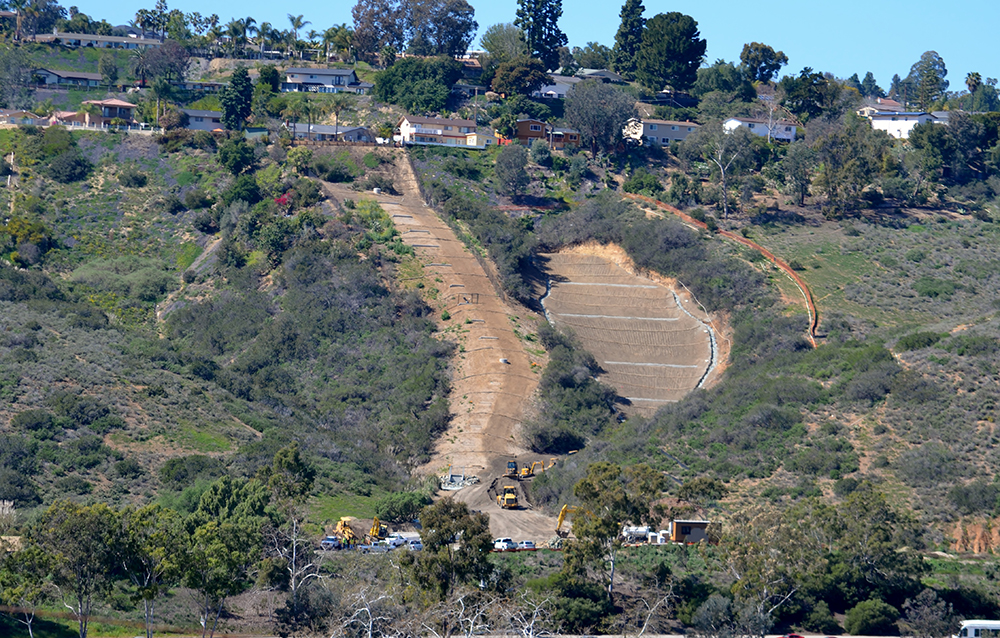The Project.
Desert View Drive is located in the Mount Soledad area atop a steep natural slope that descends approximately 300 feet in elevation over a length of 1,000 feet to Interstate 5. The natural slopes have gradients that vary from near vertical to 2 to 1 (horizontal to vertical). Portions of the slope adjacent to Desert View Drive consist of fill soils that were placed during the road construction and subdivision grading in the 1960s with slope gradients of approximately 1.5 to 1.
Client:
City of San Diego
Location:
San Diego, CA
Services:
- Geotechnical
- Geotechnical Testing
- Environmental
Project Fact:
The 2015 ASCE Region 9 Geotechnical Project of the Year.
The Leighton Solution.
Because of the 50-year history of landslides affecting the residential development in this portion of Mount Soledad, observed distress in Desert View Drive pavement, and significant erosion near an existing City storm drain outlet, the City requested that repairs be designed and constructed under as an emergency repair.
Given Leighton’s depth of experience with prior failures on Mount Soledad and expertise of with hillside exploration and stabilization design, the City selected Leighton as the prime consultant to lead the design team.
Geotechnical field work included drilling small-diameter borings to collect soil samples laboratory testing, installation of slope inclinometers as well as, drilling several large diameter borings for downhole logging for the investigation of weak landslide planes. Repair plans consisted of filling the eroded canyon with compacted fill and reconstructing City storm drain along a new alignment with the outlet at lower elevation.
Geotechnical services provided during construction included geologic mapping, geotechnical observation and testing of the canyon fill and storm drain backfill, review of material submittals, and materials testing and inspection of concrete structures.
Environmental services included Biological Resources Report, Habitat Restoration Plan, Cultural Resources Letter, and Regulatory Agency Permit Application preparation.



